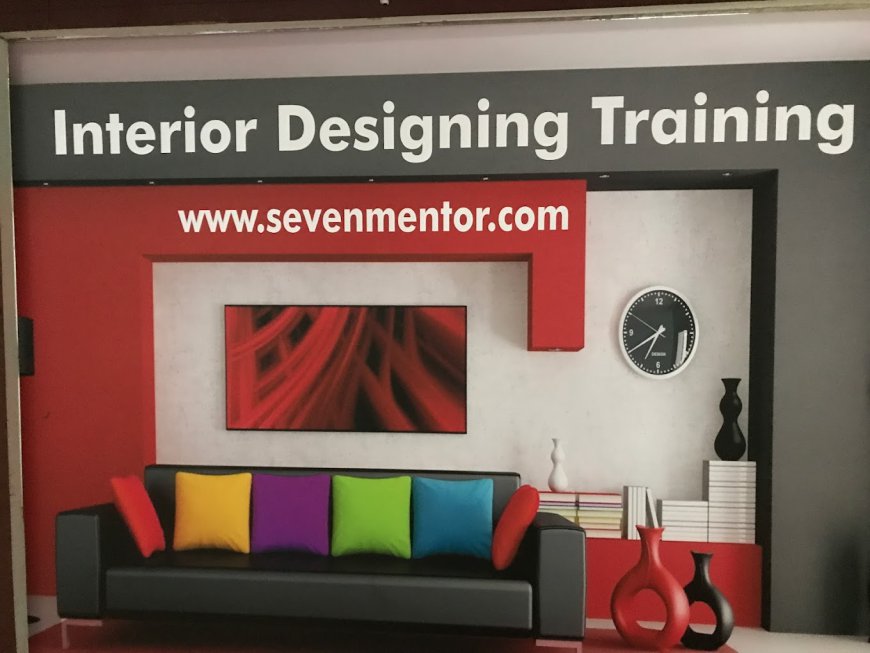What is the Future Scope of the Interior Design Industry?
What is the Future Scope of the Interior Design Industry?
The interior design industry is continuously evolving, driven by changes in lifestyle, technology, and global trends. As we look to the future, several key factors are shaping the scope of the interior design industry, creating new opportunities and challenges for professionals in the field. Here’s an in-depth look at the future scope of the interior design industry:
1. Technological Advancements
Technology is revolutionizing the interior design industry. Tools like virtual reality (VR), augmented reality (AR), and 3D printing are becoming integral to the design process. VR and AR allow designers and clients to visualize spaces in real-time, making it easier to make design decisions and modifications. 3D printing enables the creation of custom furniture and decor, pushing the boundaries of creativity and personalization. As these technologies become more accessible, they will continue to transform how designers conceptualize and execute their projects. Interior Designing Classes in Pune
2. Sustainable Design Practices
Sustainability is no longer just a trend; it’s a necessity. The future of interior design is heavily focused on eco-friendly practices, materials, and solutions. Designers are increasingly sourcing sustainable materials, incorporating energy-efficient systems, and designing for minimal environmental impact. Clients are more environmentally conscious and prefer spaces that reflect their values. The demand for sustainable designs will only grow, making it essential for designers to stay informed about green building practices and sustainable products.
3. Customization and Personalization
The future of interior design is highly personalized. Clients seek unique, customized solutions that reflect their personalities and lifestyles. Advances in technology and manufacturing allow for greater customization in furniture, fixtures, and finishes. Interior designers will need to focus on creating bespoke solutions that cater to the specific needs and preferences of their clients, ensuring that each space is one-of-a-kind.
4. Integration of Smart Home Technology
Smart home technology is rapidly becoming a standard feature in modern interiors. From automated lighting and climate control to smart security systems and integrated entertainment, the demand for intelligent, connected homes is on the rise. Interior designers must stay updated on the latest smart home trends and products to seamlessly integrate these technologies into their designs, enhancing functionality and convenience for their clients.
5. Flexible and Multifunctional Spaces
The shift towards remote work and the increasing need for adaptable living spaces are driving the demand for flexible and multifunctional interiors. Home offices, multifunctional furniture, and adaptable layouts are becoming essential components of modern design. Designers will need to create spaces that can easily transition between different uses, providing both comfort and efficiency for occupants.
6. Wellness and Biophilic Design
Wellness-focused design, which emphasizes the physical and mental well-being of occupants, is gaining traction. Biophilic design, which incorporates natural elements like plants, natural light, and organic materials, promotes a connection to nature and enhances well-being. The future of interior design will see a greater emphasis on creating healthy, nurturing environments that support the overall wellness of individuals. Interior Designing Course in Pune
7. Globalization and Cross-Cultural Influences
The interior design industry is becoming increasingly globalized, with cross-cultural influences shaping design trends and aesthetics. Designers are drawing inspiration from diverse cultures and incorporating elements from different regions into their projects. This globalization fosters creativity and innovation, resulting in rich, eclectic designs that resonate with a broader audience.
8. Rise of E-commerce and Online Design Services
The rise of e-commerce and online design services is transforming the way interior designers reach clients and deliver their services. Virtual consultations, online design platforms, and digital project management tools are making it easier for designers to work with clients remotely. This shift expands the potential client base, allowing designers to work on projects across different locations and markets.
9. Education and Professional Development
Continuous education and professional development are crucial for staying competitive in the evolving interior design industry. As new technologies, materials, and design philosophies emerge, designers must invest in ongoing learning to stay current. Professional organizations, online courses, and industry conferences provide valuable opportunities for skill enhancement and networking.
10. Economic and Demographic Changes
Economic and demographic shifts will also impact the future of interior design. Aging populations, urbanization, and changes in housing preferences will influence design priorities and demand. Designers will need to adapt to these changes by creating accessible, adaptable, and inclusive spaces that cater to a diverse range of clients and lifestyles.

 shubham1313
shubham1313 